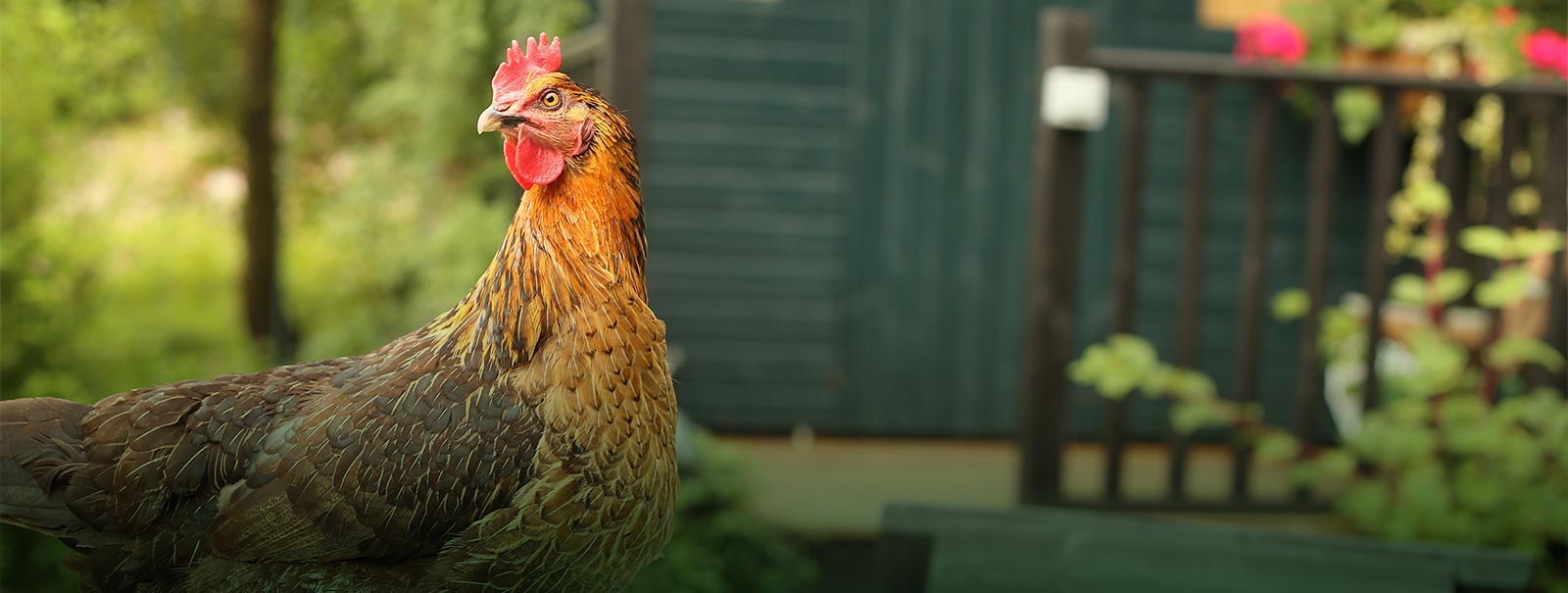
The advice hub Brooding Chicks
When you lift the lid off your incubator/hatcher to see your latest arrivals it is all very exciting!
The preparation for your new brood should begin several days before they hatch.
Whether you place them in a shed or a box the same principles apply. The box/pen should provide a draught-free environment with warmth from a lamp or other method of heating. It is essential that chicks can move to and away from the heat if they need to. They need enough room to move around but not so much space that they are too far from drinkers and feeders. Their accommodation should be secure enough to keep dogs and cats away plus predators such as rats and magpies out and your chicks in. The best bedding is packaged dust extracted shavings as these are free from bacteria and viruses or moulds.

Housing and Environment
The brooding pen should be cleaned and disinfected after the previous batch of chicks have been moved out. In their ten first weeks of life chicks are vulnerable to Marek’s disease and because your new arrivals do not inherit immunity against coccidiosis it is advisable to use a disinfectant such as Interkokask or which is licensed to destroy coccidiosis and viruses.
Infrared heat lamps or ceramic bulb lamps are commonly used, make sure you use a ceramic bulb holder as the plastic ones can melt being a fire hazard. If you choose to use an infra-red bulb ensure it does not come into contact with water-especially splashes from the drinker as this can crack the glass. You need to provide light if using a ceramic bulb heat lamp; you can put the light bulb on a timer so chicks get a natural sleep period.
Ideally the initial temperature for the first few days should be kept around 32-33ºC (AT CHICK LEVEL on the bedding). For a heat lamp the hottest area under its centre should be 40 ºC on the bedding surface with the coolest area being 24ºC outside this area. You will notice even if you do not have a thermometer your chicks will tell you if they are too hot or too cold by their behaviour. If the chicks are too cold they will be huddled under the heat source and if they are too hot they will be at the edges of the pen to escape the heat.
Your chicks should be evenly spread around the pen with some eating, some drinking and some sleeping. As the chicks grow the temperature should be reduced gradually by taking the lamp slightly higher every few days and giving them more space. You wean them off the heat over a period of weeks depending on the temperature of the outside environment.
Switch on the heat source 48 hours before placing the chicks so their environment including bedding is warmed to the desired temperature prior to their arrival.
It is important to provide your chicks with fresh water daily. Ensure your drinkers are thoroughly cleaned and that they are low enough for the chicks to drink out of but make sure that the chicks cannot drown in them. Place feed so they can actually reach it and have plenty of opportunity to come across it in the pen.
Feeding
Chicks should have fresh starter crumbs placed daily in clean appropriately sized troughs. Always ensure the crumbs are in date as out of date crumbs may have less vitamins leading to deficiencies in your birds.
When you come to remove the chicks from the incubator/hatcher only remove the dry chicks, leave any wet ones to dry in the incubator/hatcher.
Some of the eggs will still have chicks hatching, do not be tempted to break the shell as the chicks will bleed and be more prone to infections. Chicks which do not hatch on their own are very unlikely to survive or thrive.
When you have your chicks in their new home watch them and listen to them. Contented chicks will be eating, drinking, sleeping and making a low pitched cheeping sound. High pitched cheeping occurs when a chick is not happy or stressed, usually due to its environment not being correct. Observe the chick’s distribution in the pen. Are they huddled as they are cold or are they standing to avoid a draught? Make changes accordingly.


